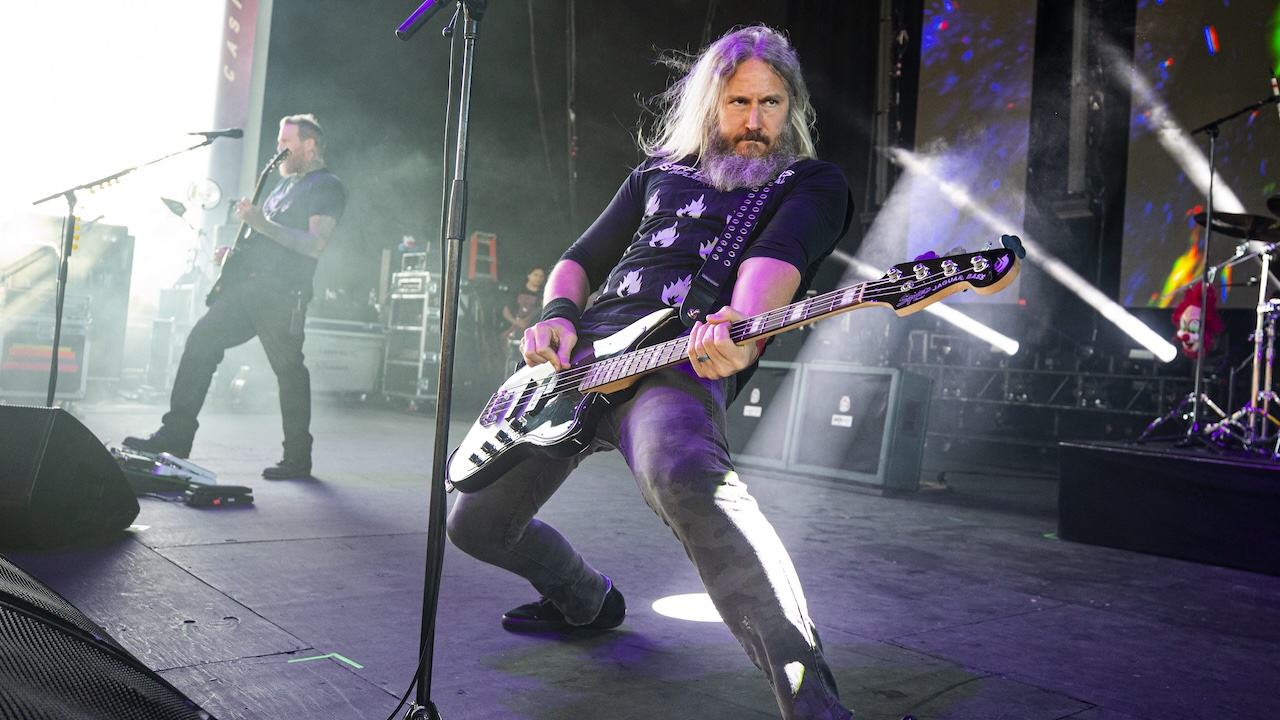
Troy Sanders plays bass. He also sings. Not only that, he is the frontman of Mastodon, a band that is quite possibly the most exciting musical force of the heavy rock persuasion operating today.
Formed in Atlanta, Georgia in 2000, the foursome – Sanders plus guitarists Brent Hinds and Bill Kelliher and drummer Brann Dailor – have recorded eight albums to date, all packed with densely-layered sound that manages to be intimidating and catchy at the same time.
As a bassist, Sanders formed a style as unique as Mastodon itself. He’s a pocket player first and foremost, but he also breaks it up with commanding power chords. His tight fingerstyle is equally adept at heavy-bottom reinforcement and matching complex unison guitar lines with grooving counterpoint. So much so that he was featured in our list of the 20 greatest bass solos of all time.
So, the million-dollar question: how does Sanders hold down the majority of Mastodon's vocals while also laying down the bass parts? Restraint is the key, he told us.
“As the bass player in a heavily guitar-driven band, I don't need to be in the spotlight any more than I already am. I try to get some feel when the time is right, but because we have two guitar wizards and a mountain range of a drummer, my role doesn't usually need to be any more than just rocking out.”
“We have a vocal tag-team between Brann, Brent and myself; we bounce ideas off each other to see what the strongest one is. Then it takes loads of practice and repetition, because playing bass and singing is a lot like rubbing your belly and patting your head. There are two different rhythms going on at once! I just try to be as tasteful as possible on the bass. Then I go into vocal mode.”
Asked how being lost in a 'fog of rock' on stage can sometimes affect his bass playing, Sanders muses: “I lose perspective. I know my bandmates are playing super-well, but sometimes it's just so massive that it takes me the entire set to know what's really happening.
“That should make me concentrate harder, but I kind of levitate into this mental dreamscape and I probably make more mistakes than ever! I’m just so glad that we can still do it and that it's the same four guys.
“Relationships are difficult to sustain, whether it's a friend or a girlfriend or whoever, so I'm proud of the fact that we've stayed close for so long. It never ceases to amaze me that we're still able to do what we do.”
Asked about the tools of his trade, Sanders points his signature Fender Jaguar bass. While plenty of bass players love a bit of Jaguar, from Colin Greenwood of Radiohead to Stefan Olsdal of Placebo, you'll be hard-pressed to find someone with their actual name on the headstock.
“I was in Kansas City, Missouri, and my younger brother Darren found a Jaguar bass in a store and bought it for me. I'd been playing loads of different basses, so he thought it would be nice for me to try a Jaguar. I played it and fell in love with it. A year or two later the kind folks at Fender approached me, and they told me that they were interested in doing a signature bass. I was blown away!”
Sanders didn't take long to make up his mind. “We started going back and forth with signature Jazz and Precision basses. I told them I was really digging my Jaguar a lot, and they were interested in doing one of those, as there's only a small number of Jaguar signature basses. I told them that sounded perfect.”
Sanders joined forces with Fender once again in 2023 to create a signature Precision Bass. “My favorite feature is the worker bee icon on the back neck plate – which is inspired by Mastodon's Remission album because it symbolizes our work ethic and dedication.”
Bass distortion is also a subject close to his heart. “I own a lot of different distortion pedals, and I bring out a different one for every tour. My go-to is called a Tall Font Russian, made by a small company called Wren & Cuff in California. It's based on the old Big Muff: in fact, I once A/B'ed them together and I couldn't tell the difference. I also have a Rottweiler distortion, made by TC Electronic, and then my classic Russian-made Big Muff. Those three are my go-to distortions.
“I know it's ridiculous that I still go to stores and want to buy pedals just to see what they sound like. On the other hand, it's cool that the fire is still burning in me, that I still want to want to jam with my bandmates and that I look forward to writing new songs and going on tour. I hope that fire continues to burn.”







